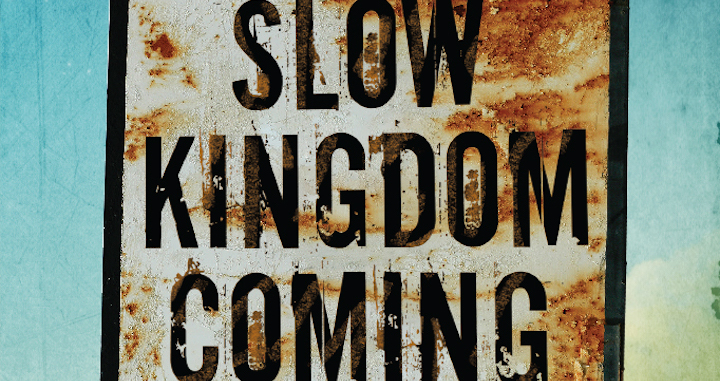One Sunday morning a few years ago, our church sanctuary was empty except for a few of us talking near the exit. My son, two at the time, was running between the pews, not yet tall enough to see over them, like he was adventuring through a medieval maze of ten-foot-high hedges.
These pews have built-in kneelers, padded benches that fold down to about six inches off the floor. Early in the service when the congregation confesses sins together, we fold them down to kneel for prayer. As he dashed between pews, my main concern was that he’d find a pencil, wield it as a sword and then trip and impale his eye. Instead, he stopped to pull down one of the kneelers, which dropped hard (fortunately his toes weren’t crushed). Then he paused and knelt like he’s seen us do in the service.
He got up, went to the next pew, pulled down the kneeler and knelt briefly. Then he went to the next. There are two or three kneelers per pew. He pulled down one after another, regularly stopping to kneel, then moving to the next. He was consumed by the task with all the concentration of a master craftsman. Eventually he pulled down enough kneelers for 125 people, half the church.
In the service an hour earlier, we had said aloud, “We confess that we are captive to sin and cannot free ourselves.. . . We have not loved you with our whole heart; we have not loved our neighbors as ourselves.”
I didn’t grow up in churches that had kneelers, but for the past nine years in this church I’ve been grateful for the weekly chance to confess at the beginning of worship. (When I make it to church on time, my wife would add—okay, there’s personal confession number one.) Over the past twenty years I’ve also learned that kneeling for confession is the right posture for entering into the work of justice—with humility, supplication and vulnerability. If we don’t lower ourselves before God and neighbors, we will fail at lasting change; we need to be transformed ourselves as we work for the world to become more just. The work of justice is interwoven with the need for healing, and anyone who wants to work for healing is invited to make confession a regular practice: “Therefore confess your sins to one another, and pray for one another, so that you may be healed” (Jas 5:16).
What tender hope we’re invited into through this promise. When we practice confession in our work for justice, we find freedom to work for the healing of others at the same time we are healed.
After college I was going to move to Europe to work with a refugee ministry. The missions agency first required us to spend four months training at their Chicago home office. During this time most other trainees spent time learning languages like Tagalog and German. I was going to live near London and decided not to work on an English accent, so I had extra time. In the small basement library I discovered the journals of the nineteenth-century Danish philosopher-theologian Søren Kierkegaard. I’m not sure I’d heard of him before. I had taken a few religion courses in college, but had majored in business and minored in political science. (My Christian college was generally more into Ronald Reagan’s free market than Søren Kierkegaard’s existential dilemmas.)
During those four months, I lost and found myself repeatedly in his journals. The intensity of Kierkegaard’s inner search has nourished my justice work ever since. He said that life can only be understood backward, but it must be lived forward. We slow down to look backward for self-examination and understanding so we can then better move forward. No, we won’t ever move forward with perfect understanding. But when this backward-forward movement includes confession, it can become a cycle of healing that frees us to see more clearly how to become agents of healing and justice.
The Gospel of Mark tells the story of Jesus arriving in Bethsaida, where people brought a blind man and asked Jesus to heal him.
He took the blind man by the hand and led him out of the village; and when he had put saliva on his eyes and laid his hands on him, he asked him, “Can you see anything?” And the man looked up and said, “I can see people, but they look like trees, walking.” Then Jesus laid his hands on his eyes again; and he looked intently and his sight was restored, and he saw everything clearly. (Mk 8:23‑25)
Jesus led him step by step. The blind man followed step by step. The healing didn’t happen in a flash. Then Jesus touched the man and put spit on his eyes. It helped, but things were still blurry. People looked like trees. After doing it again, then the man could see clearly.
I love this story of gradual healing because it affirms how gradual the process often is to be healed and to help others to heal. Sin can blind us—so we are unaware of selfishness that leads us to exploit when we intend to help. Sin can blind us—so our hurts guide us instead of other people’s hopes. Sin can blind us—so we can’t see the needs under the surface.
We confess our temptations and vulnerabilities so we can be healed gradually, like the man in Bethsaida, both for what we have done and what we have left undone. Healing helps us to see so we can keep following, step by step, toward helping each other to flourish. As we see, we can be guided not by shame that blinds us but instead by a clearer vision of God’s kingdom.
Taken from Slow Kingdom Coming by Kent Annan. Copyright (c) 2016 by Kent Annan. Used by permission of InterVarsity Press, P.O. Box 1400, Downers Grove, IL 60515-1426. www.ivpress.com

